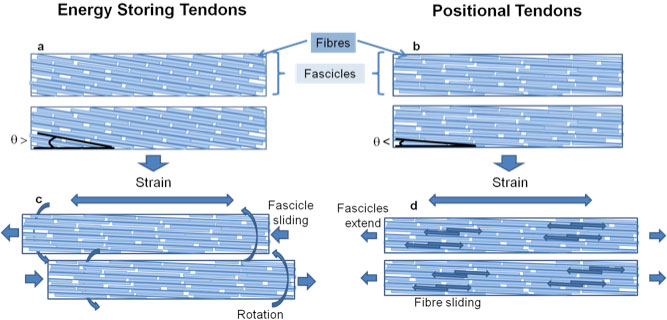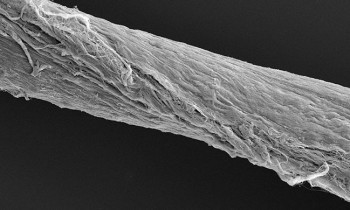Project
Investigating aging in equine tendinopathy
| Primary Investigator: | Hazel Screen |
| Funder: | Horse Race Betting Levy Board Funded: T23 |
Injury to the superficial digital flexor tendon (SDFT) is common in the Thoroughbred racehorse due to the extreme stresses and strains it experiences, and there are currently no effective treatment options. Full elucidation of structure-function relationships in this tendon are key to understanding how the SDFT is specialised to withstand its extreme strain environment, and identification of alterations as a result of fatigue loading provide information regarding the initiation and progression of tendinopathy.
In this study, we have identified two mechanisms that provide the SDFT with the extensibility and recoil required for efficient function. Firstly, we have established that the large extensions required by this tendon are facilitated by sliding between adjacent fascicles, suggesting that the interfascicular matrix plays a crucial role in function of energy storing tendons. Secondly, we have identified the presence of helical substructures within SDFT fascicles, which is absent in fascicles from positional tendons. This helix enables the fascicles to act as springs, providing greater efficiency of recoil. Further, our results indicate that this helix is compromised as a result of fatigue loading, which leads to a reduced ability to recoil and recover. This is likely to have a detrimental effect on tendon efficiency, and may predispose the tendon to injury.
We have also identified several age-related alterations in tendon properties which may affect tendon injury resistance. The capacity for sliding between adjacent fascicles is decreased in aged tendons, suggesting there are age-related alterations to the interfascicular matrix in energy storing tendons. Further, our results demonstrate that the helix structure is compromised in aged individuals, which may explain why fascicles from aged SDFTs are less resilient to loading.
These data enable greater understanding of specialised tendon structure-function relationships and the factors leading to the initiation of tendinopathy. This information will be important for developing future treatment options and preventative strategies to recapitulate SDFT properties.

Schematic illustrating how extension mechanisms differ between energy storing and positional tendons
Publications
- Peffers MJ, Thorpe CT, Collins JA, Eong R, Screen HRC, Clegg PD 2014. Proteomic analysis reveals age-related changes in tendon matrix composition, and age-specific matrix fragmentation (under review).
- Thorpe CT, Riley GP, Birch HL, Clegg PD, Screen HR. 2014 Effect of fatigue loading on structure and functional behaviour of fascicles from energy-storing tendons. Acta Biomater. 141742-7061.
- Thorpe CT, Riley GP, Birch HL, Clegg PD, Screen HRC. 2014 Tendon fascicles show an age specific response to cyclic fatigue loading. J R Soc Interface. 8;11:20131058. doi: 10.1098/rsif.2013.1058
- Thorpe CT, Klemt C, Riley GP, Birch HL, Clegg PD, Screen HR. 2013. Helical sub-structures in energy-storing tendons provide a possible mechanism for efficient energy storage and return. Acta Biomater, 9, 7948-56.
- Thorpe CT, Birch HL, Clegg PD, Screen HR. 2013. The role of the non-collagenous matrix in tendon function. Int J Exp Pathol 94, 248-59.
- Thorpe CT, Udeze CP, Birch HL, Clegg PD, Screen, HRC. 2013. Capacity for sliding between tendon fascicles decreases with ageing in injury prone equine tendons: a possible mechanism for age-related tendinopathy? Eur Cells Mater, 25, 48-60.
- Thorpe CT, Udeze CP, Birch HL, Clegg PD, Screen, HRC. 2012. Specialization of tendon mechanical properties results from interfascicular differences. J R Soc Interface, 9 3108-3117


